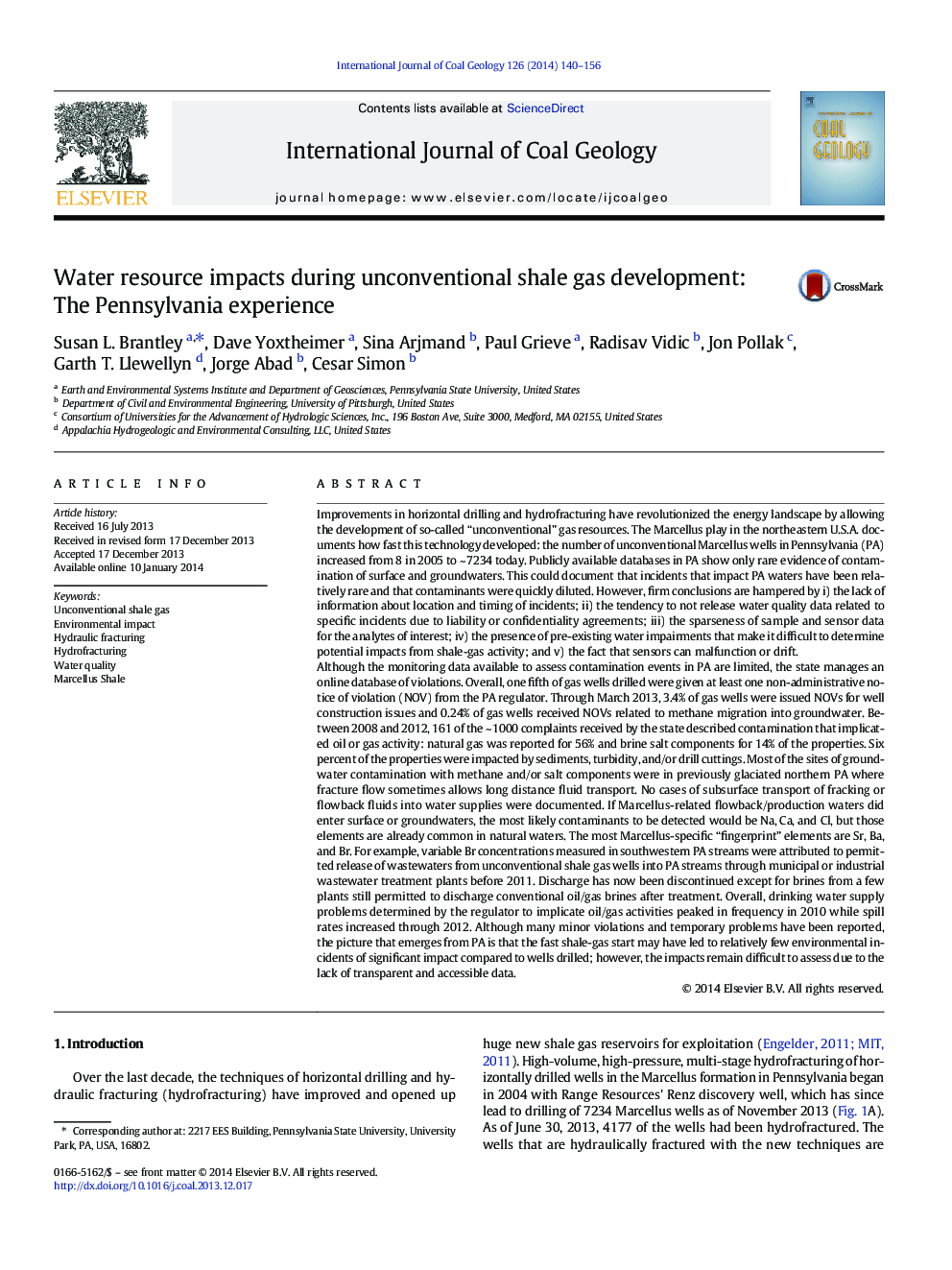| Article ID | Journal | Published Year | Pages | File Type |
|---|---|---|---|---|
| 8124006 | International Journal of Coal Geology | 2014 | 17 Pages |
Abstract
Although the monitoring data available to assess contamination events in PA are limited, the state manages an online database of violations. Overall, one fifth of gas wells drilled were given at least one non-administrative notice of violation (NOV) from the PA regulator. Through March 2013, 3.4% of gas wells were issued NOVs for well construction issues and 0.24% of gas wells received NOVs related to methane migration into groundwater. Between 2008 and 2012, 161 of the ~Â 1000 complaints received by the state described contamination that implicated oil or gas activity: natural gas was reported for 56% and brine salt components for 14% of the properties. Six percent of the properties were impacted by sediments, turbidity, and/or drill cuttings. Most of the sites of groundwater contamination with methane and/or salt components were in previously glaciated northern PA where fracture flow sometimes allows long distance fluid transport. No cases of subsurface transport of fracking or flowback fluids into water supplies were documented. If Marcellus-related flowback/production waters did enter surface or groundwaters, the most likely contaminants to be detected would be Na, Ca, and Cl, but those elements are already common in natural waters. The most Marcellus-specific “fingerprint” elements are Sr, Ba, and Br. For example, variable Br concentrations measured in southwestern PA streams were attributed to permitted release of wastewaters from unconventional shale gas wells into PA streams through municipal or industrial wastewater treatment plants before 2011. Discharge has now been discontinued except for brines from a few plants still permitted to discharge conventional oil/gas brines after treatment. Overall, drinking water supply problems determined by the regulator to implicate oil/gas activities peaked in frequency in 2010 while spill rates increased through 2012. Although many minor violations and temporary problems have been reported, the picture that emerges from PA is that the fast shale-gas start may have led to relatively few environmental incidents of significant impact compared to wells drilled; however, the impacts remain difficult to assess due to the lack of transparent and accessible data.
Related Topics
Physical Sciences and Engineering
Earth and Planetary Sciences
Economic Geology
Authors
Susan L. Brantley, Dave Yoxtheimer, Sina Arjmand, Paul Grieve, Radisav Vidic, Jon Pollak, Garth T. Llewellyn, Jorge Abad, Cesar Simon,
